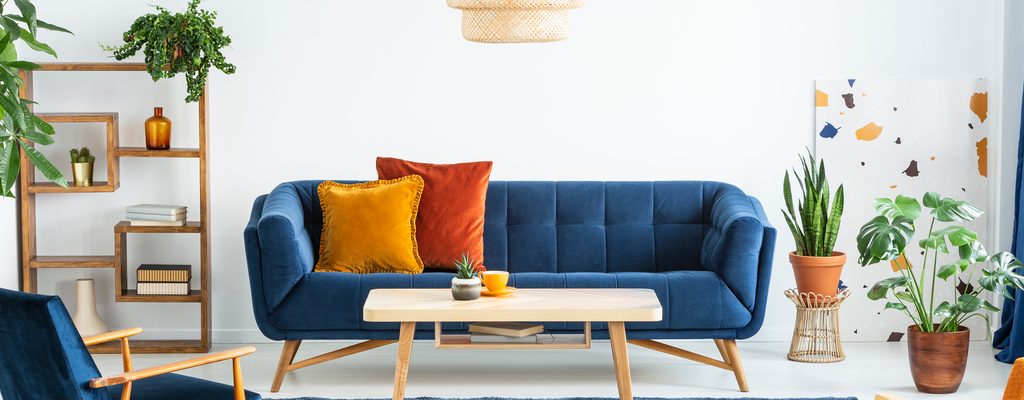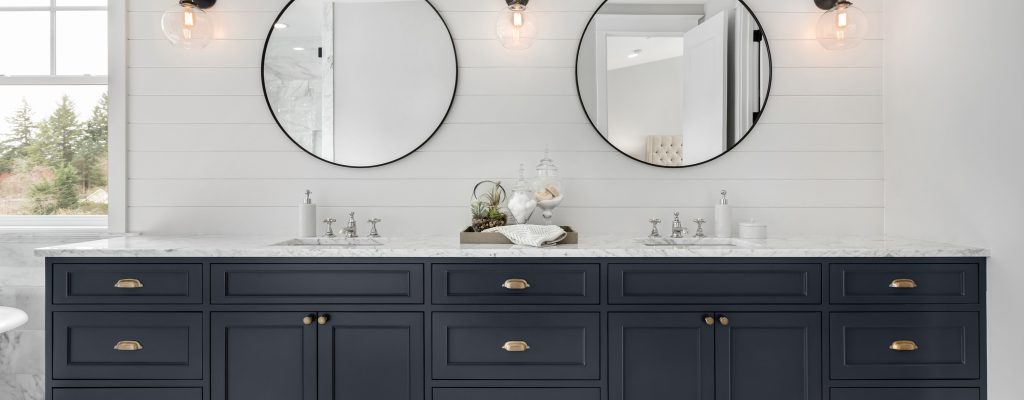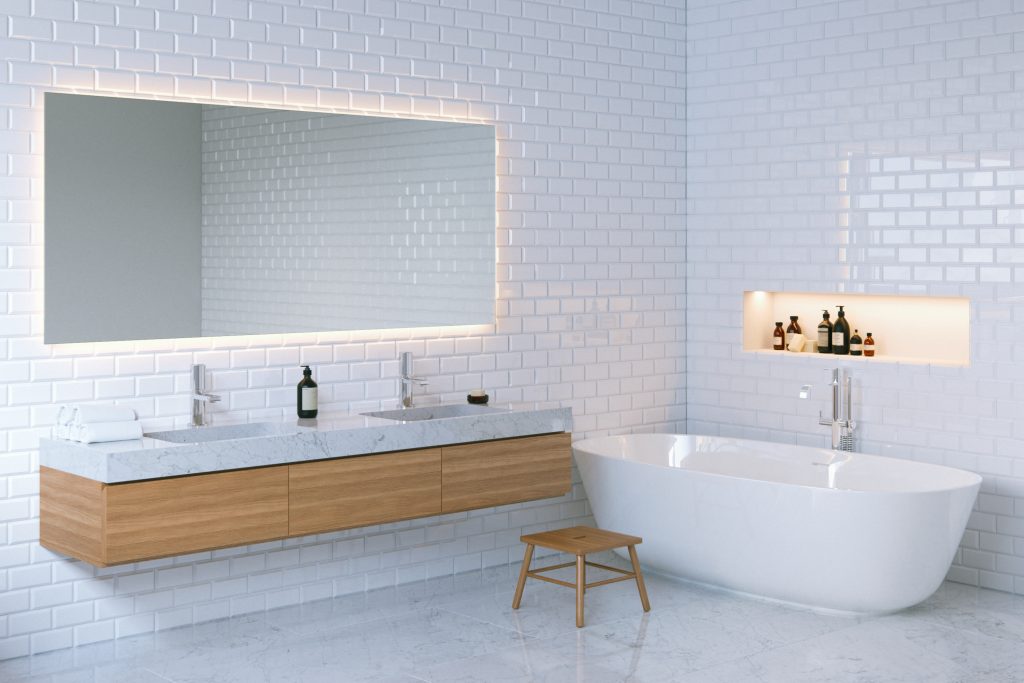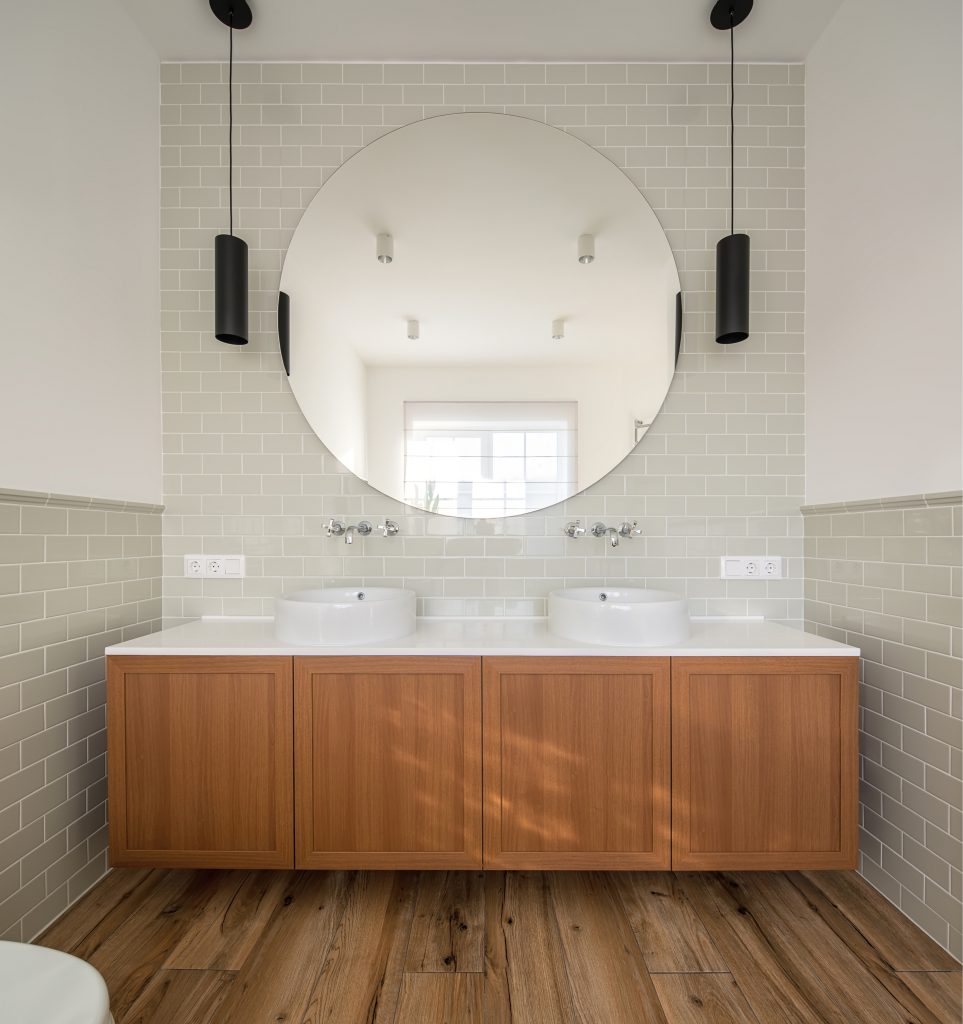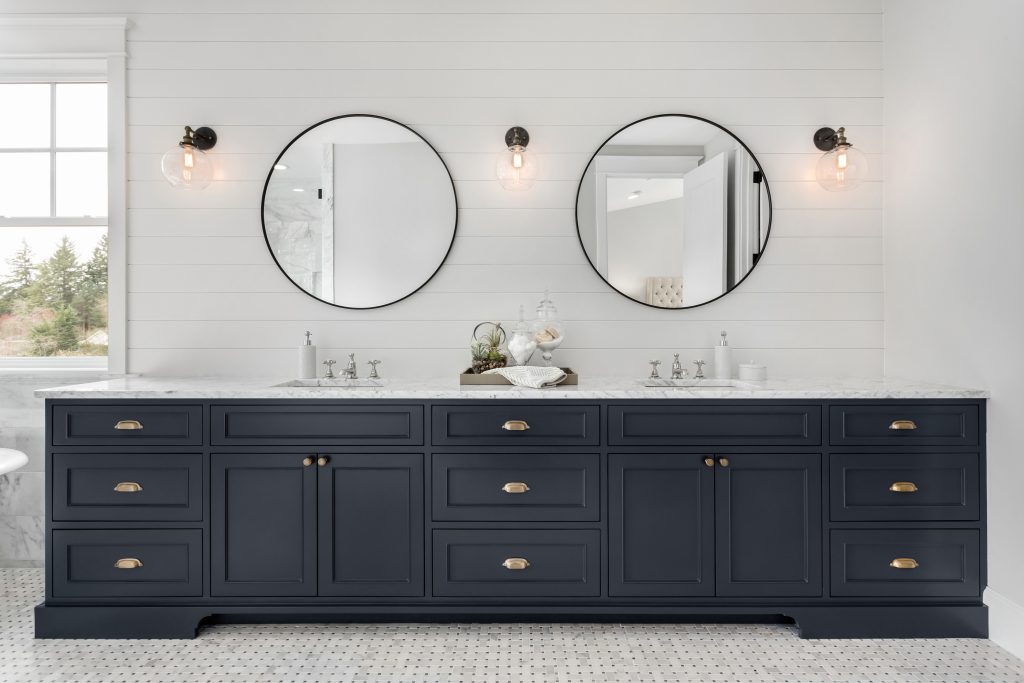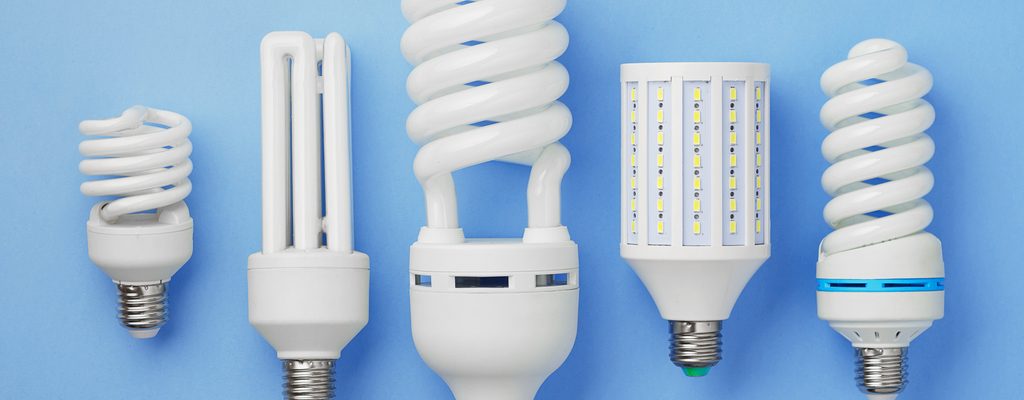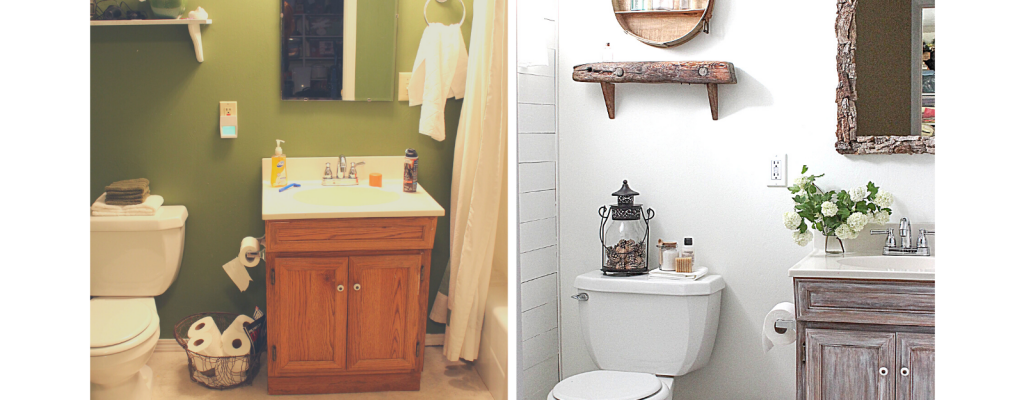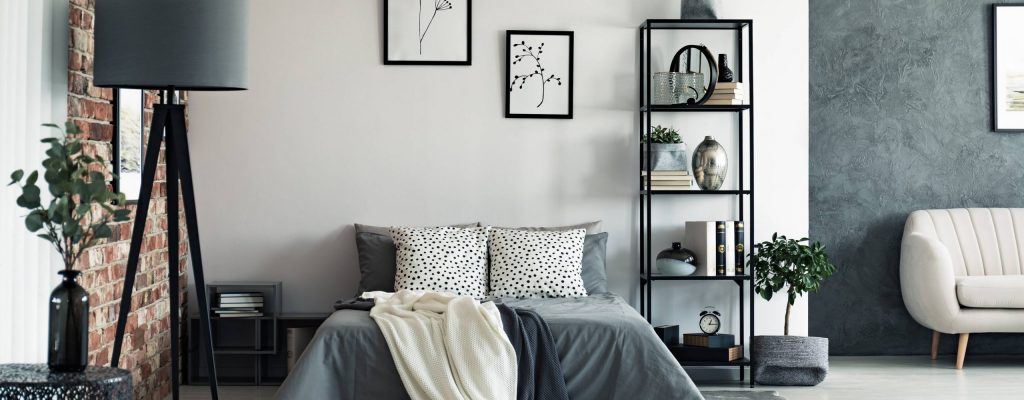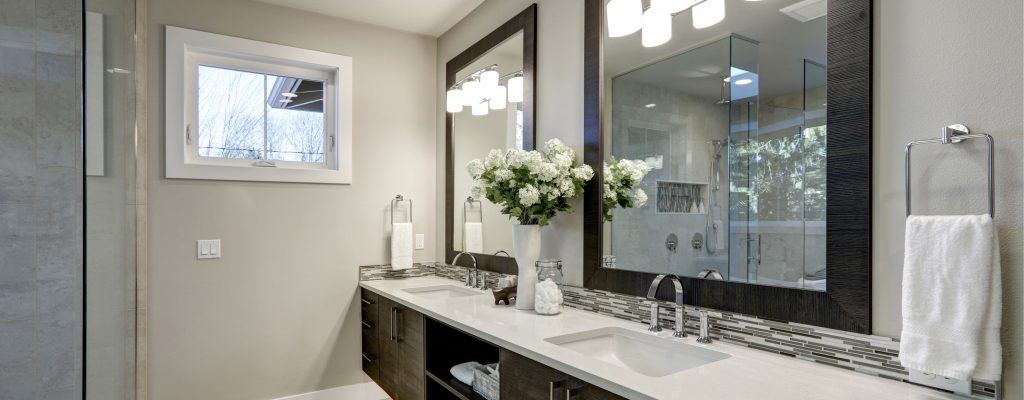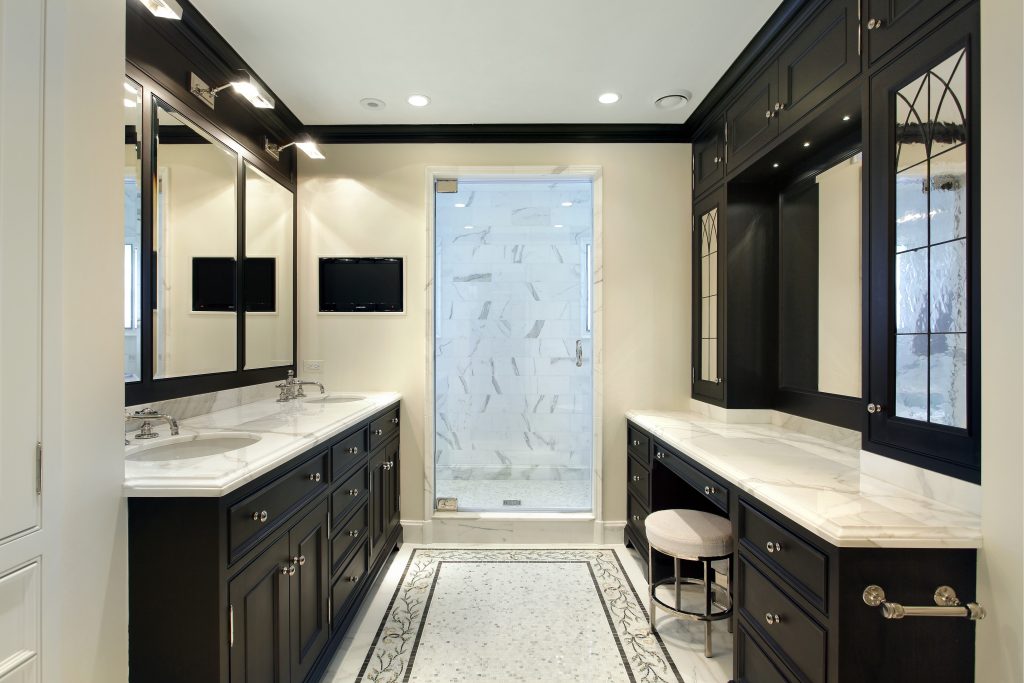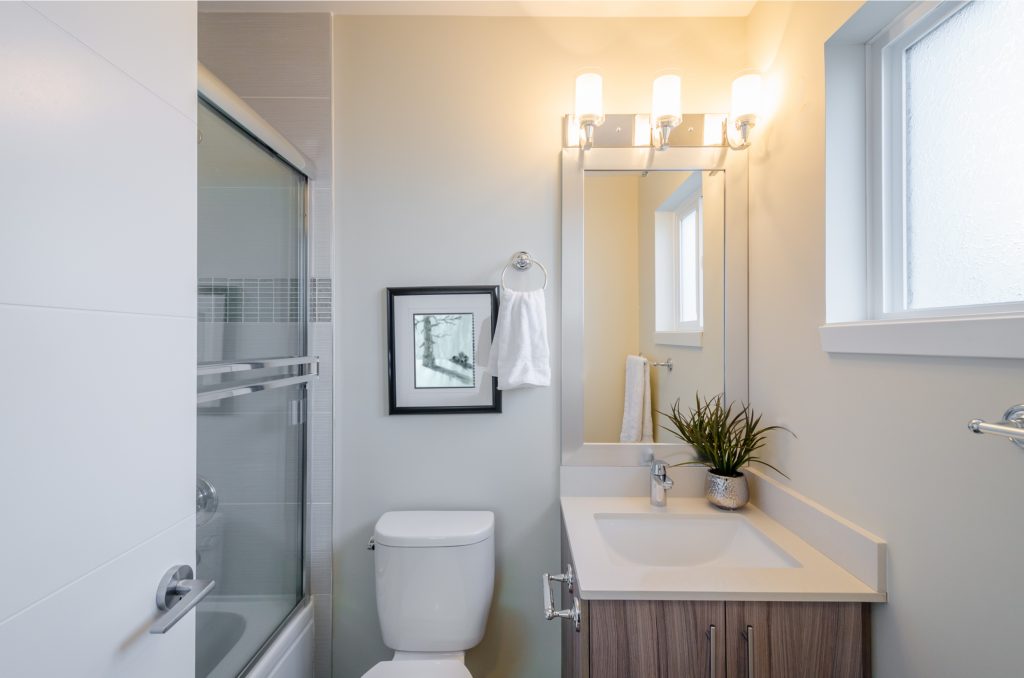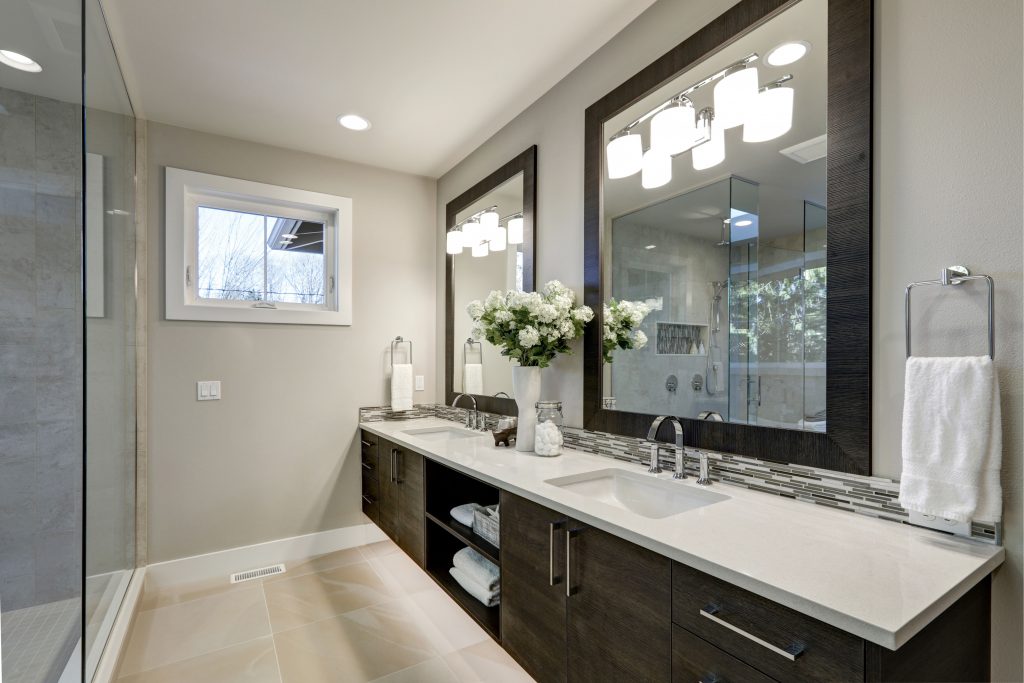It’s easy to get overwhelmed by all of the styles and options when it’s time to make an update to your home. There are hundreds of design tips and style trends out there, and it’s hard to know where to start! We’ve put together a list of some of the most popular design trends with simple explanations and some ideas to get you started! Get ready to transform your home into a space you’ll never want to leave!
Minimalism
The main concept of this interior design style is that “less is more.” The hallmarks of Minimalism are few furniture pieces, limited or monochromatic color schemes, clean lines, streamlined shapes, and no clutter.
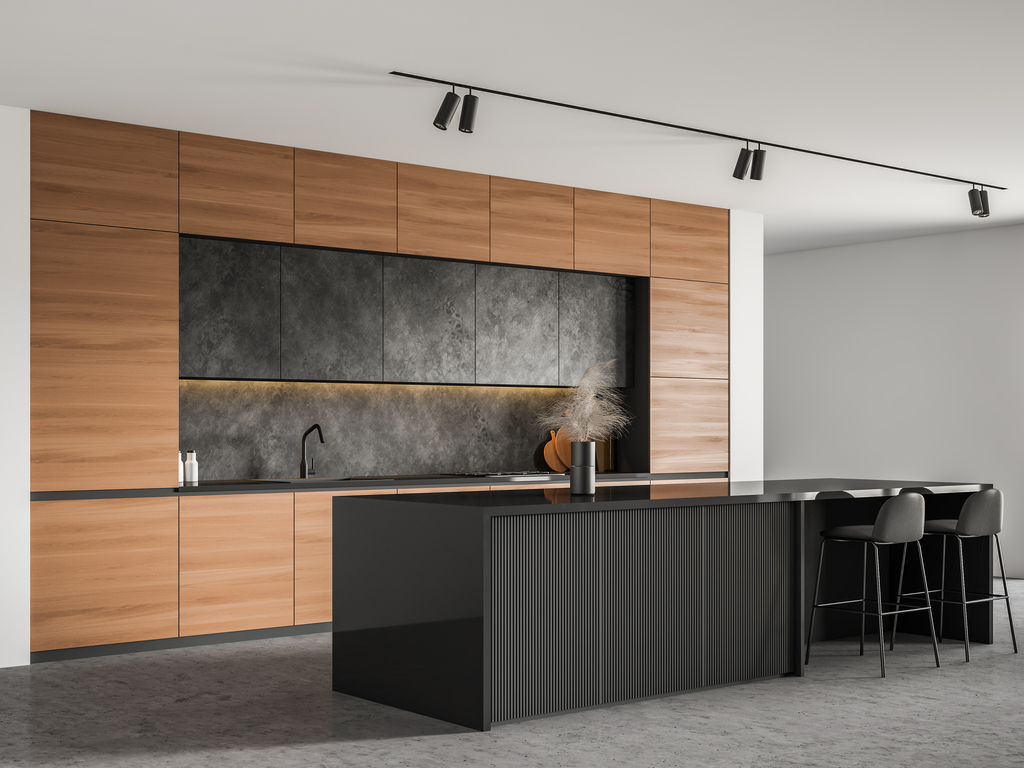
Start creating your Minimalist space by removing all clutter and accessories then find furniture and fixtures that have simple shapes and clean lines. Minimalist designs need plenty of light to give a sense of openness, but the goal is for the light itself to blend into the design without the fixtures distracting the eye. Hidden perimeter lighting, recessed lights, and simple track lights are good options in main areas. In your kitchen and bathrooms, try LED light strips underneath cabinets and at the bottom of floating vanities. In every space, stick with a limited neutral color palette, or go monochromatic for a big visual impact.
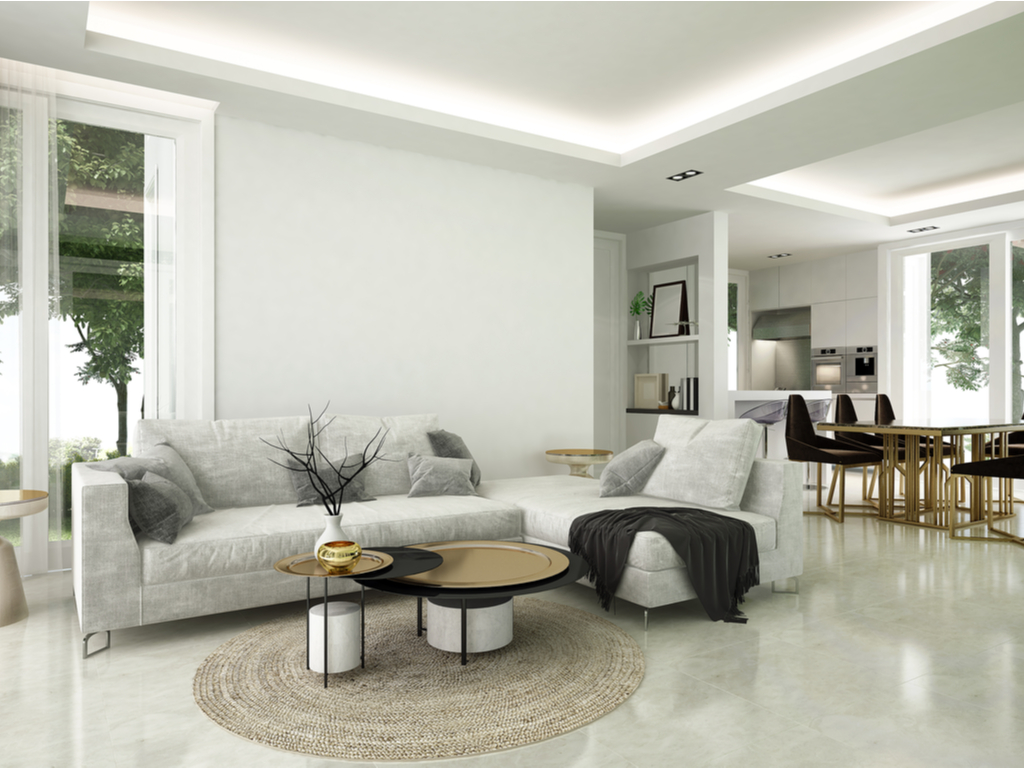
For more Minimalist design inspo, check out Leibal for some truly awe-inspiring minimalist designs that’ll have you thinking hard about paring down!
Mid-Century Modern
Mid-Century Modern design is full of perfectly balanced juxtapositions. Soft, organic lines and natural wood are combined with harder, geometric shapes and man-made materials like plastic, vinyl, and Lucite. Form follows function in this design which has strong ties to minimalism, so furniture and accessories should serve a purpose and help to keep the room clutter free.
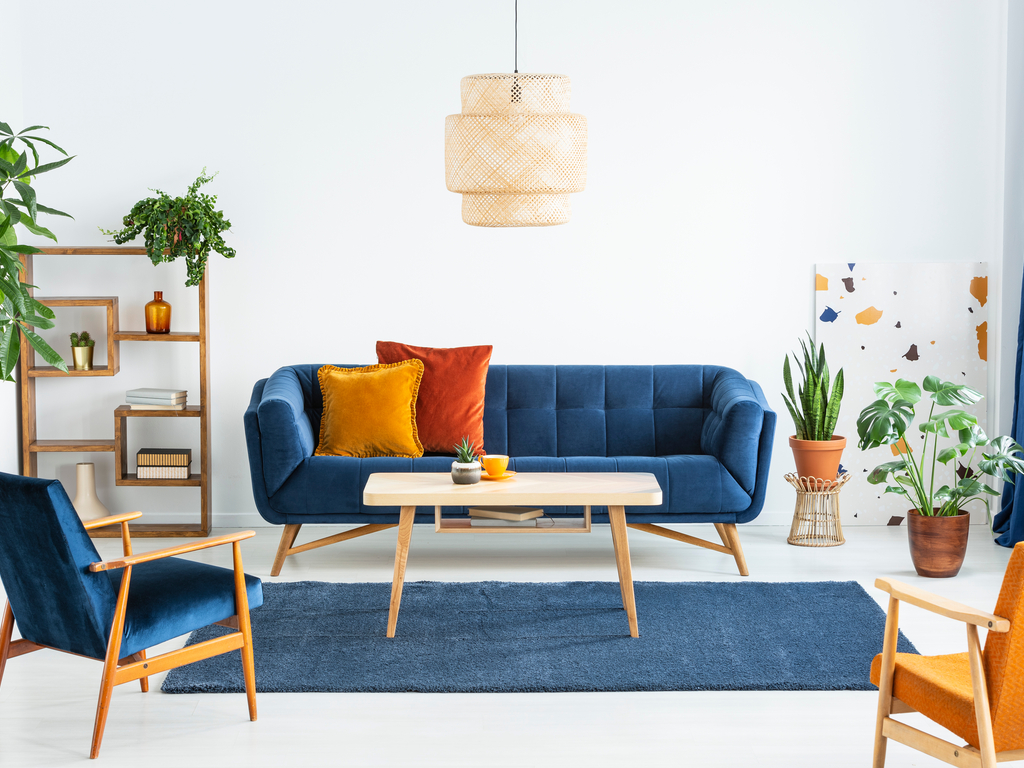
To get the look, find functional furniture pieces that will help keep your space organized and clutter to a minimum. Look for one or two showstopper pieces that you love and use them to anchor your room, then finish out your space with geometric and organic pieces that work together to give your room a polished feel. Keep the minimalist feel by only using accessories that serve a purpose, like a vase or a light fixture. Mid-Century light fixtures and lamps come in a huge variety of materials, colors, and price points, which makes them an ideal way to add your own personal touch to your Mid-Century design!
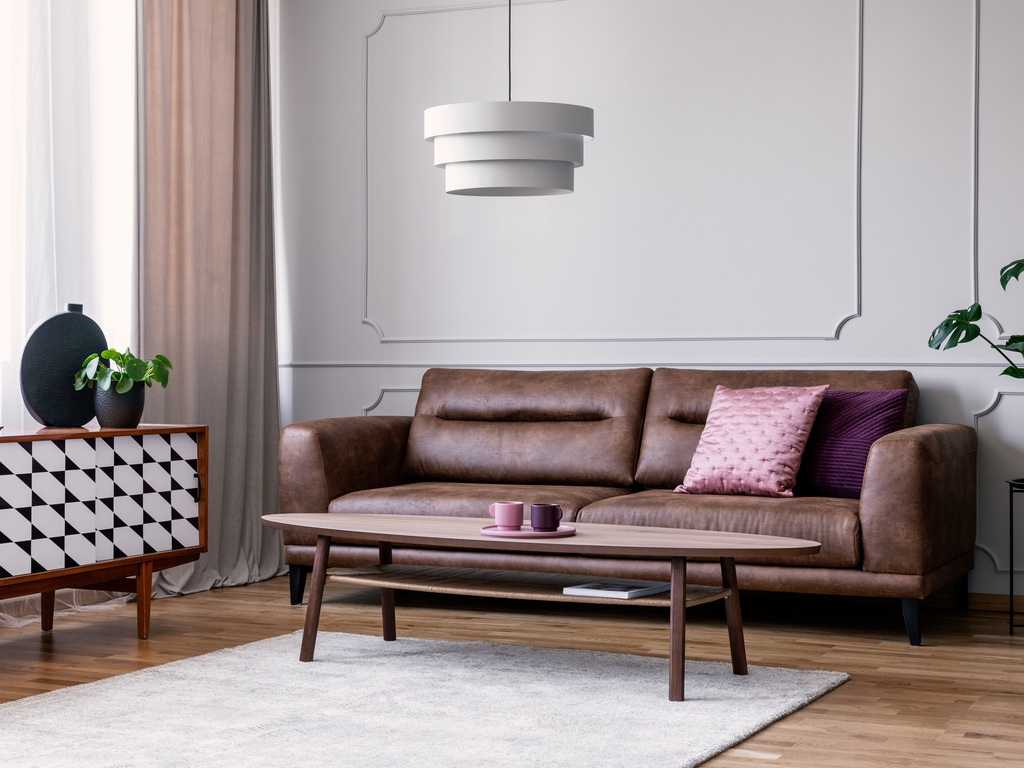
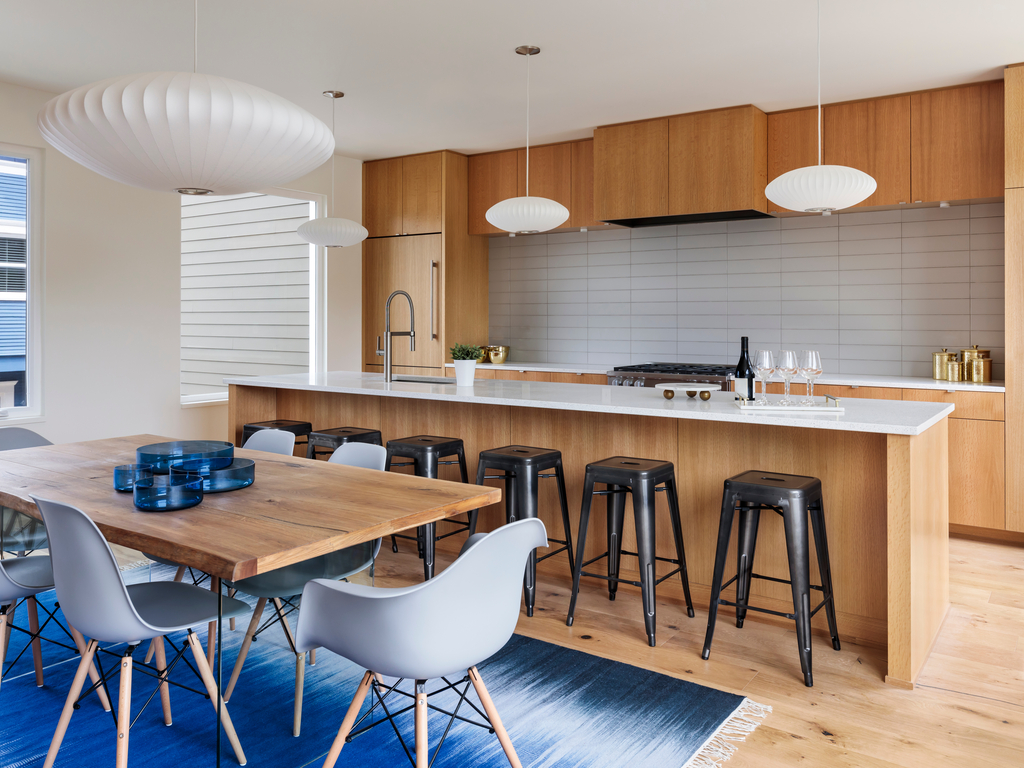
For more Mid-Century Modern inspiration, take a look at the incredible designs over at Destination Eichler to see great ways you can incorporate this design style into your home!
Scandinavian
Scandinavian design came to be in the 1930s, and is inspired by the nature, climate, and simple designs of the Nordic region. While similar to Mid-Century Modern design which often explores deeper colors and designs, Scandinavian design is all about maximizing light with lots of whites and neutrals. It has a minimalist feel with no clutter, simple yet beautiful and furniture that’s functional, and a light neutral color palette with pops of playful accent colors.
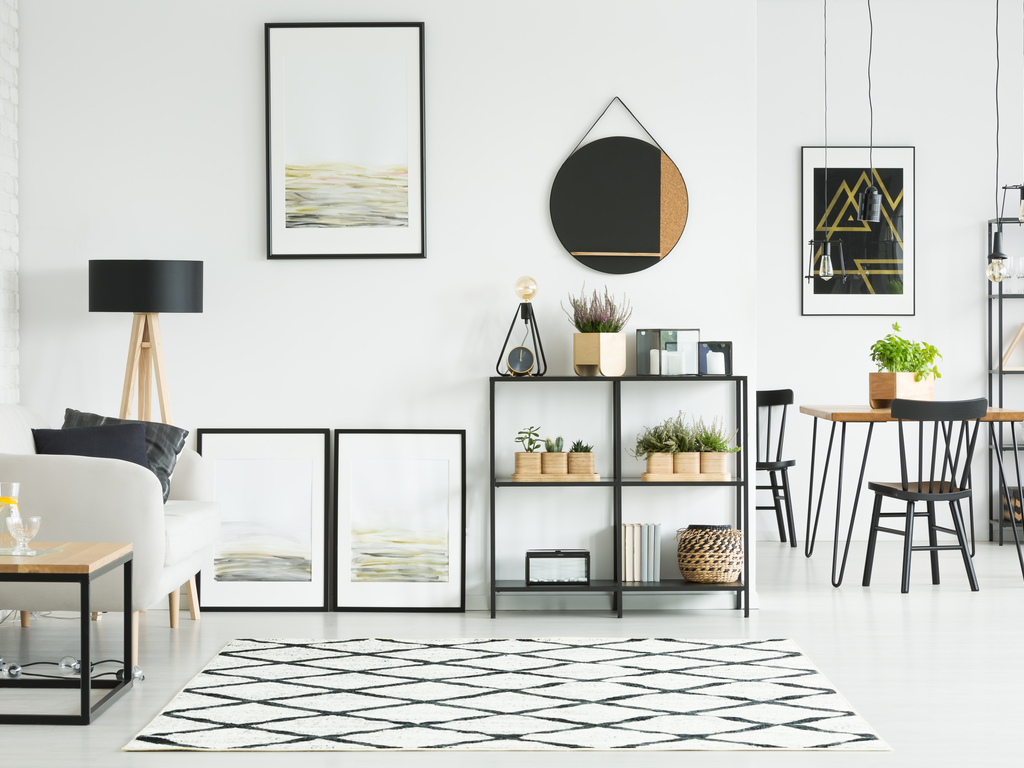
To get the look, avoid wall to wall carpeting and opt for light or white walls. Choose furniture that is both simple and functional that will help keep your space feeling organized and fresh. Maximizing natural light is very important in Scandinavian design. If your space isn’t blessed with big windows, fun and playful Scandinavian-inspired pendant lights and floor lamps are easy to find! Add them anywhere in your room that’s shadowy to bring the light in! Add warmth to your space with soft organic fabrics like a chunky wool blanket. Look for functional accessories with soft edges and clean lines, and don’t be afraid to mix in vintage and traditional elements to get that Scandinavian design vibe just right.
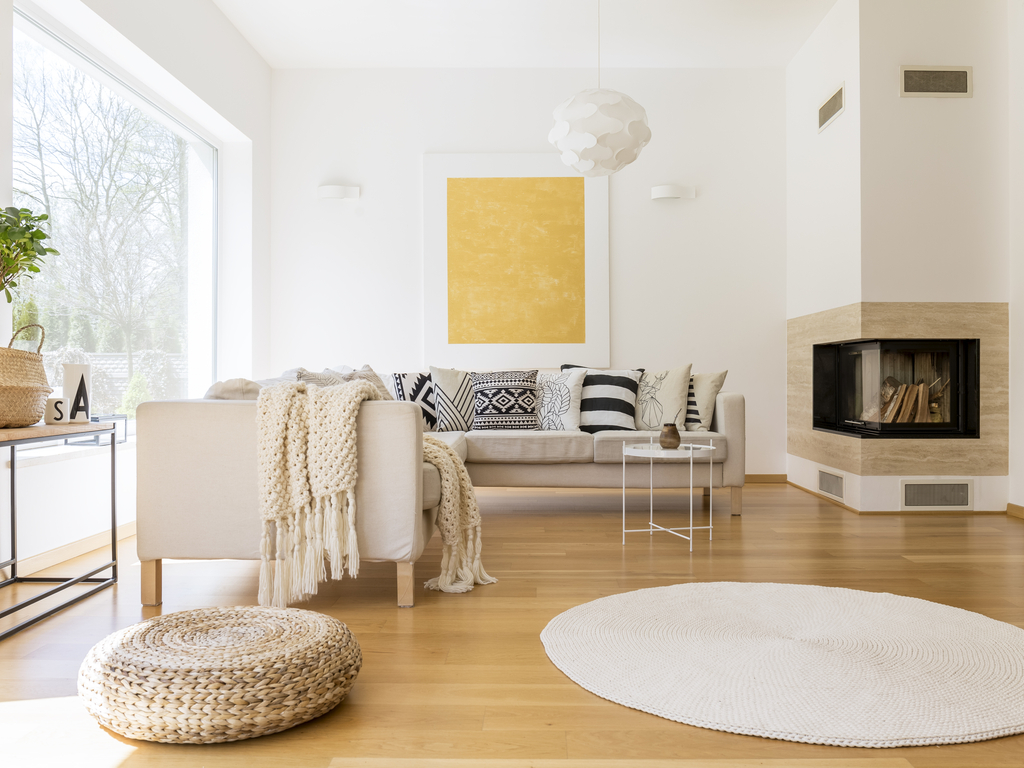
If you want to see more of this style, Niki Brantmark at My Scandinavian Home runs a delightful blog full of light and bright Scandinavian designs that’ll have you painting your walls white and installing a new pendant light by next weekend!
Eco Design
For the environmentally-conscious individual, this next design style is all about sustainability. Eco Design appears very similar to Minimalist and Scandinavian designs due to the simple, paired back feel and the use of natural materials, but it centers around sustainability.
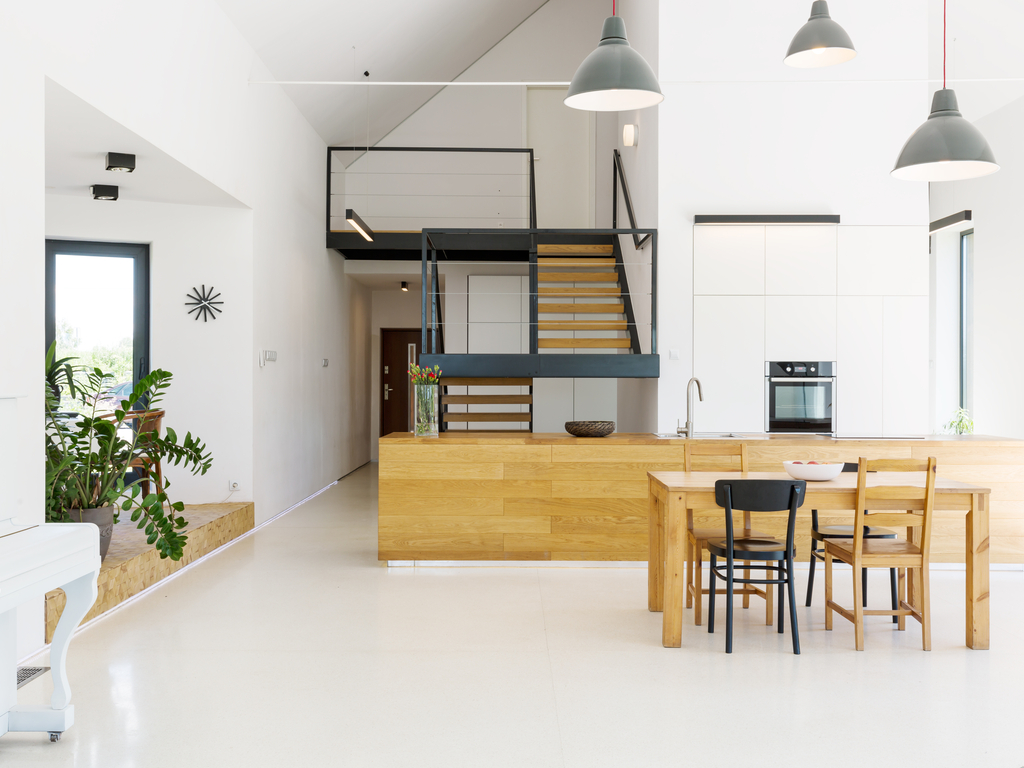
To get this style right, pay attention to the materials you choose when you’re designing your space. Look for earth-friendly materials like cotton, bamboo, wood, and recycled materials. Upcycle when you can, and look to nature for your color palette. Accent your space with plants to help bring the outside in. Natural light is best, but if you live somewhere that doesn’t have a wall of windows, you can bring in extra light with eco-friendly lamps and fixtures like a bamboo pendant light. This is a great design style for those who love to repurpose and restore!
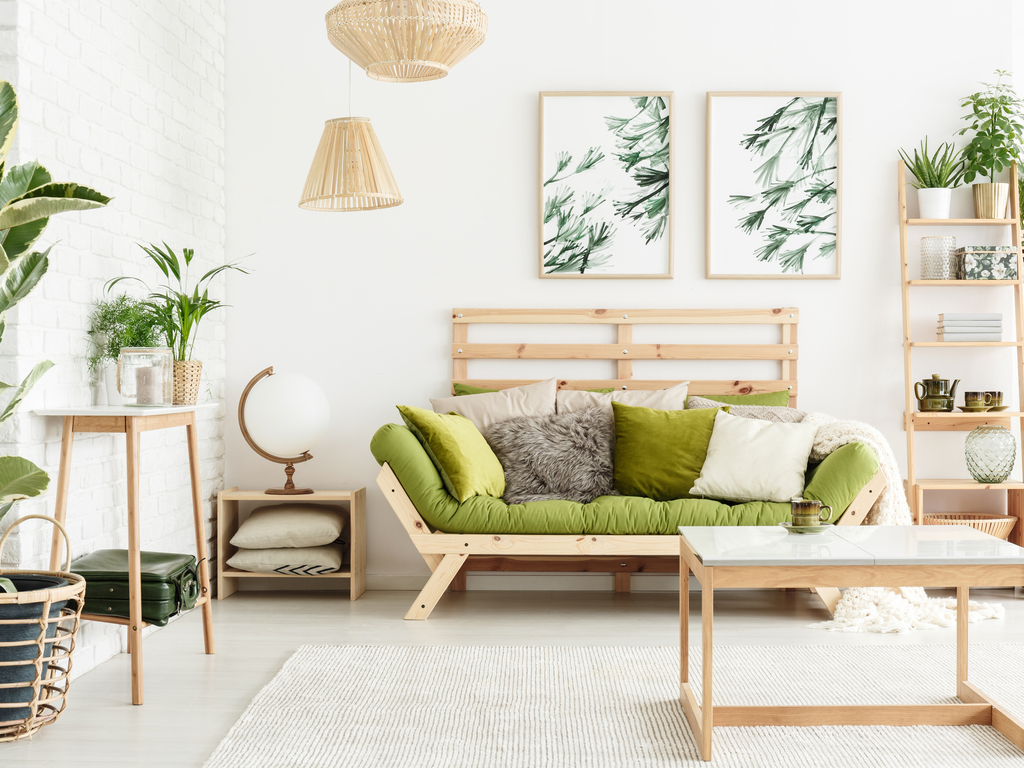
If you need some Eco-friendly design inspo, Moore House Family is a company that restores old homes using natural and sustainable elements, and they love to break the mold in their designs!
Industrial Loft
This style got its start when big cities started converting old industrial warehouses into housing. These spaces had large windows and open floor plans, and became home to a community of artists and creatives who added modern touches, but left the original character of the building. Today, Industrial Loft design is making its way into townhouses and suburban homes as homeowners everywhere are falling in love with this unique combination of raw textures and modern finishes.
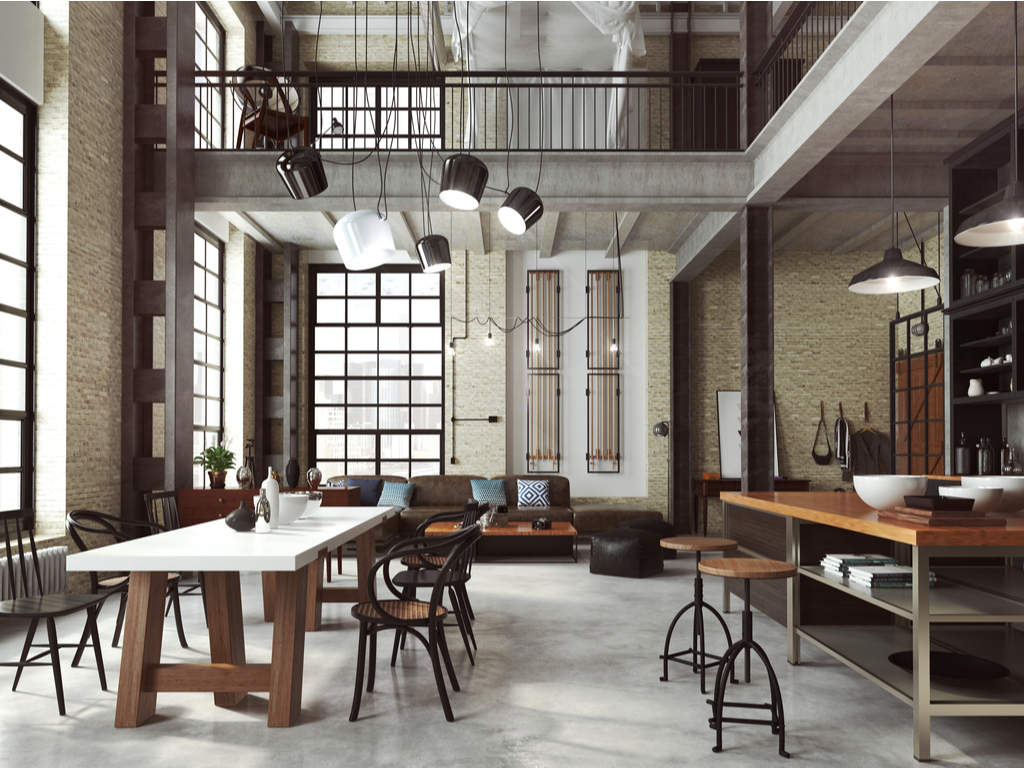
To get this look, find ways to incorporate raw and rustic materials into your space like exposed brick, cement, and steel. To keep it from feeling too harsh and cold, warm up your space with reclaimed wood furniture and accessories, and overstuffed armchairs or leather sofas. Light your rooms with warehouse-inspired, powder-coated light fixtures with exposed bulbs. This design loves to tell a story, so look for vintage lighting and accessories with a history to add some character to your space.
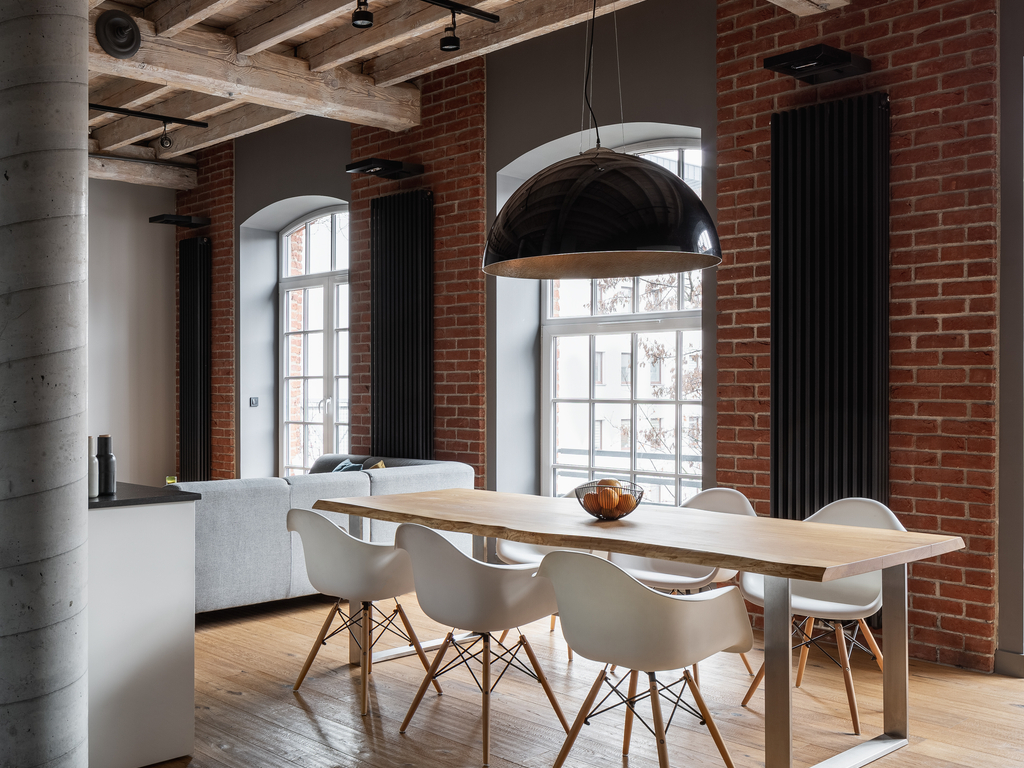
To see some breathtaking Industrial Loft designs, check out My Warehouse Home’s Instagram page to get your ideas flowing!
Maximal Minimalism
This design style is a bold and exciting compromise between Minimalism, which is all about simplifying, and Maximalism, a design style where bigger, bolder, and busier all mean better. If the calm, clean, relaxing vibe of Minimalism appeals to you but it feels too sterile, and the bubbly, bold, creative feel of Maximalism feels inspiring but chaotic, then this unlikely combination of minimalist ideals and maximalist colors, patterns, and textures might be for you!
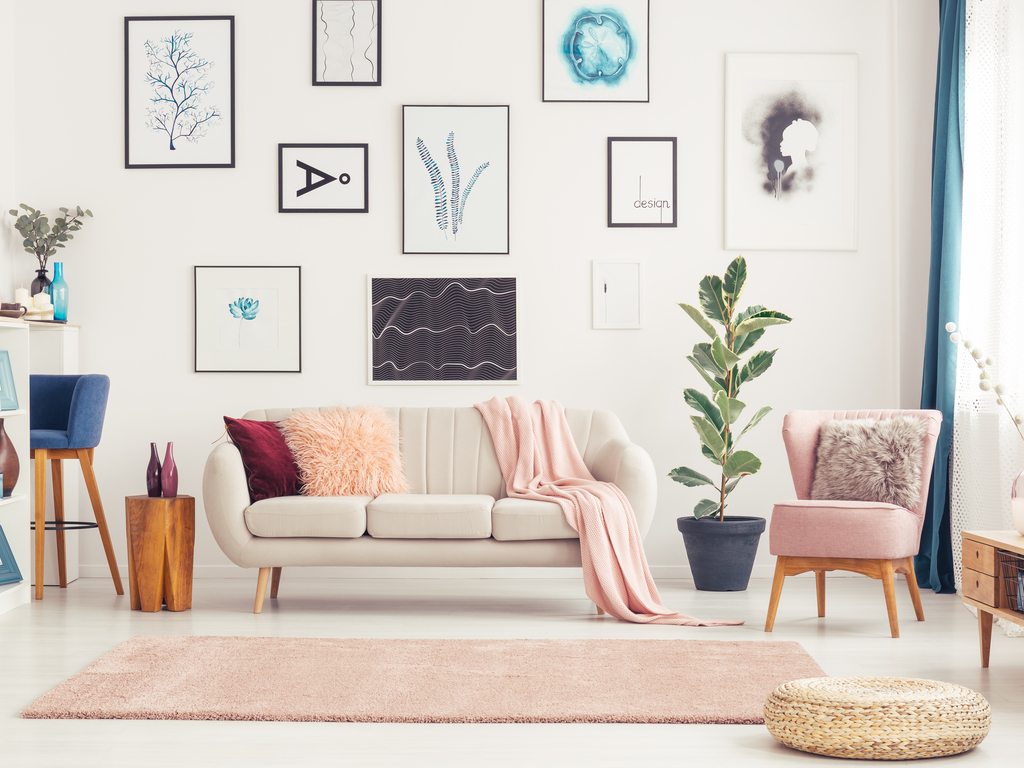
You can keep your sleek and uncluttered aesthetic, but go ahead and throw that neutral color palette out the window! Go big with a bold mural on the wall or a brightly colored sofa. Light your minimal with simple fixtures or recessed lights, but use your lighting to add to your design. Consider adding LED bulbs or rope lights that change colors with the push of a button to add some drama to your space when the time feels right! This design style is still minimalism at heart, but it’s very art-centered. Give your space a personality! The goal is to give your clean lines and simple shapes a beautifully artistic backdrop.
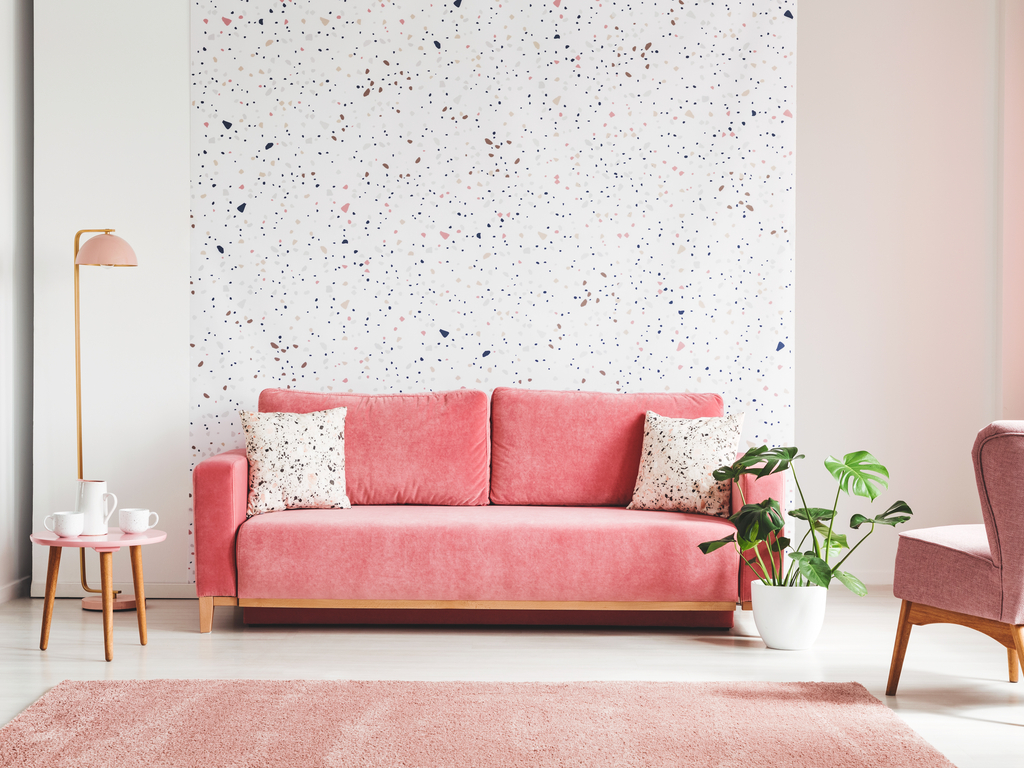
It’s Time To Get Started!
You make the rules in your space! If Mid-Century Mod is your thing, dive in! If you like bits and pieces of a few different styles, don’t be afraid to mix and match! Making your space reflect your own style is the best way to make your house a home. Be bold, experiment, and love where you live!
Does your home need a style refresh? Don’t forget to update your light fixtures too! Call the experts at Illuminations and they’ll help you figure out how to get the perfect ambiance for your new space.
